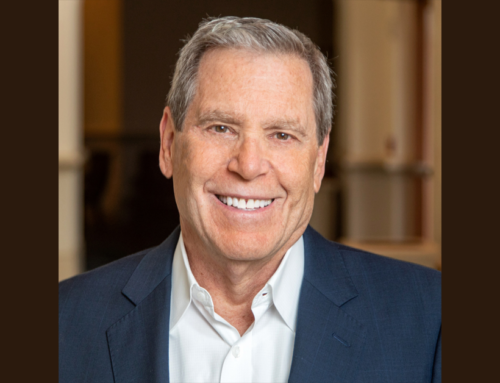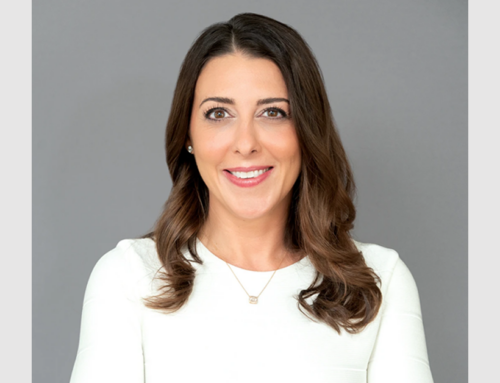The Covid-19 pandemic has forced financial advisors to shift the way you market your services. In person marketing and networking is severely restricted for the near future and if you want to succeed in this new world, you have to adapt to the new virtual reality.
Even before the pandemic, our industry was already making a shift towards digital marketing combined with digital events. Things like pay-per-click advertising, newsletters, podcasts, video, and virtual events like webinars, panels, and summits have been gaining steam for years. But now, the pandemic has accelerated that trend to light speed.
The most successful firms have jumped all over the virtual marketing trend and are crushing those firms who haven’t.
To help you succeed in virtual marketing, I hosted a virtual panel with two experts. Bill Keen is the founder and CEO of Keen Wealth Advisors, which is an RIA in the greater Kansas City area with half a billion dollars in assets under management. Lisa Salvi is Vice President, Business Consulting and Field Experience at Charles Schwab, where she oversees the advisor consulting group and produces the industry’s gold standard annual benchmarking report.
The 5 Best Ways to Market in a Covid-19 World (Replay)
As we talked, Bill, Lisa, and I zeroed in on 5 steps that will help you become a virtual marketing leader.
1. Codify what you know to be true.
One mistake I often see advisors make is they jump into marketing tactics before really clarifying what they stand for. By putting tactics before your truth, your marketing will lack a coherent spine that gives force and generates attraction to your message.
Bill framed it this way.
What do you believe? We cannot be a chameleon in this business. And it’s very tempting to be a chameleon when you’re first starting out because you want to attract clients. And in my case, I started at Dean Witter in the early ’90s and I had to get a certain amount of clients and revenue and assets, or else I was out of there.
So it was difficult to not be a chameleon back in the early parts of your career. But finding what you believe and then not being afraid to share what you believe with your clients first and then then your prospective clients, that’s where it starts. Because if you don’t have your message in your voice, or you’re afraid to demonstrate it, then we can’t create any marketing materials in my opinion.
Few people have truly thought long and hard about what they believe and then oriented their marketing–and their life–around their beliefs. But when you do this, you’ll have an unusual level of clarity that will make marketing your business and living your life so much easier.
To codify what you know to be true, many of my coaching clients have completed the “Your Truth” exercise.
To complete the exercise, answer the following question: What I know to be true is… Your response could be a combination of business truths and life truths. Then at the end of the question, add the word “because” and then type in your response.
For example, “What I know to be true is all clients can benefit from having an updated financial plan because I’ve seen example after example of how having a financial plan can improve people’s financial outcomes.”
Now, answer that question 15 times.
Your 15 truths form the spine of your belief system and you can infuse your marketing messages, how your run your business, and how you live your life with them. It’s a simple yet powerful exercise.
To download this exercise in a Word doc, click here.
2. Clearly define who your ideal client is.
It doesn’t matter whether you have $50 million or $50 billion in AUM, you’ll get farther faster by dialing in on who your ideal client is. And no, simply targeting people who have $1 million or more in investible assets is not what I’m talking about here. According to Lisa:
“One of the most important things you can do for your business is to really have a crystal clear picture of who your ideal client is and who you’re building your business for. And the more I dig into our benchmarking results and work with the advisors, having this clear client persona seems to be the magic bullet. It’s about really knowing who your ideal client is, knowing what’s important to them and what their interests are. For example, are they raising children or do they have grandchildren? Are they taking care of elderly parents? Are they charitably inclined? What types of events are they interested in? Do they go to the symphony? Do they hang out at the golf course?
We actually work with clients and try to get them to name that person in their persona. So that they’re saying, okay, well, what would John want? Or what would Sally want as they’re making strategic decisions? When we look at the results of firms that have great marketing outcomes, almost double the other firms, they tend to have an ideal client persona, a very clear image of what their client value proposition is. They generate 26% more new clients per year and 41% more new client assets per year by having those two things.
Bill has done one of the best jobs I’ve ever seen in dialing in on a specific client persona. Most of his clients are the “millionaire next door” seniors who are navigating the retirement transition. However, Bill goes much deeper and works with a specific subset of that group. Here’s Bill:
We have developed a real niche and a specialty in working with employees of engineering firms and engineers. A lot of firms steer clear of the engineering type. They think they’re too picky or too detailed. And what we found was that working with the engineering community has really been refreshing. Engineers are planners by nature. They also are consultants by nature. So they respect the consulting relationship. They’re not afraid to find somebody to delegate things to, much like their clients did to them during their careers. And they’re not afraid to pay a fair fee for that service.”
And beyond looking for just any engineer who is retiring, Bill also looks for a psychographic fit.
Yes, there’s the demographic, the age, the amount of capital that someone might’ve accumulated, but there’s also the type of person that we work with. And I always say that we work with people that are typically grateful and humble on most days, everyone has a bad day, so we’re not holding somebody to perfection here, but we don’t work with people that are toxic and disrespectful. We work with people that have built their wealth, typically from zero, they built their wealth on their own. They have wisdom from that journey of living within their means, of seeing market cycles, living through those things.
One of the best ways to zero in on your ideal client is to look at who your current ideal clients are. What do they have in common? Start sketching out the similarities then start building your marketing and messaging around reaching more them.
3. Determine which of of the “Big 5” marketing tactics will reach your ideal clients.
There’s a “Big 5” in digital marketing right now. During our virtual discussion, we completed a live poll and asked our attendees which of the 5 they wanted to get better results from. Here are the results:
- Virtual events and webinars: 47%
- Email marketing: 37%
- Video: 21%
- Digital pay-per-click ads: 20%
- Podcasting: 13%
When it comes to marketing, think of your email list as the core from which all your other marketing emanates. Bill says one of the keys to his firm’s phenomenal growth is sticking to a weekly email schedule that alerts his audience to new content and then trickles down into his other initiatives.
We push out a blog every other week and then the other weeks we push out a podcast. So two podcasts a month, two blogs a month. And they go out through our email lists and then they get posted on LinkedIn and Facebook. And we’re constantly doing test bullet campaigns.
I’m just going to say it: a consistent email schedule should be a given, not an option. Deciding where your emails lead your audience comes back to identifying that ideal client. Where do your ideal clients spend their time online? Where can you reach them most effectively? Where can you deliver the most value?
Based on your answers, go back to the digital marketing list, select two items that your email marketing will support, and commit. Start your podcast. Film short YouTube videos on your phone where you give your personal spin on the day’s market news. Or hire a consultant who can help you buy effective, targeted digital ads.
4. Build out your marketing strategy.
As I explain in my guide to starting a newsletter, the short-term goal is to keep capturing email addresses. When you’re providing value and publishing consistently, people will open and your list will continue to grow. My weekly GTK email letter averages about a 35% open rate, which is quite high considering the recipients are not clients. I have another weekly email that goes just to clients that averages more than a 50% open rate.
So, how do you convert prospects opening your emails to new business?
On way is to deliver content that addresses the specific needs that made someone search for you in the first place. If you really understand your audience, then you can use your blogs, podcasts, and newsletters to position yourself as the expert who can help.
Bill has had tremendous success driving his email subscribers to open house and educational events around the Kansas City area. Even as those events have moved online during the pandemic, they continue to reinforce a community bond around Bill’s existing client base while also attracting prospects.
Before Covid, we were an organization that conducted about 50 live educational events per year. When Covid happened, we started doing town halls online every other week, and then a podcast every other week as well. So there was a lot of conversation and a lot of material. As financial advisors, we are in some cases, the only beacon of light that our clients might see in a given day when we’re going through something like Covid-19. And our clients want to hear us. They want to see that we’re measured, they want to see that we have a plan, that we aren’t being Pollyanna, but that we aren’t hiding under the desk either.
Moving from live events to virtual events isn’t as easy as setting up some extra cameras and designing a good PowerPoint. We’ve all improved our Zoom and Gotowebinar skills lately, but you still have to make sure you’re presenting content that’s going to speak to your audience, address their pain points, and subtly underscore both your expertise and the value of your services. If you hit those checkpoints, more prospects are going to start calling for follow-up appointments. And, perhaps more importantly, your existing clients are going to tell their friends and family how you’ve helped them maintain perspective during a very trying time.
And while we’re talking about virtual marketing strategies here, Lisa wisely pointed out the following:
It’s very important to remember that most new business is still coming from client referrals. You want to bring that into your thinking, into your storytelling, into your conversations with those clients, so that you’re grounding your strategies in how to generate more of that new business. And in this Covid environment where so many people are talking about their financial challenges, those are very natural referral opportunities. And you want to make sure not only that your clients know that you’re open for referrals, but that your website is going to tell a really compelling story if people go check you out.
5. Fine tune your website landing page and SEO.
Lisa just mentioned another digital marketing must: an attractive professional website that ranks highly when folks search for advisors in your area.
I want you to Google yourself, your business, and ‘financial advisor’ and wherever you’re located and see where you’re showing up on the list. If you’re not on that first page, most people do not scroll below on any search results. You want to get as high as you can. I want you to show up and look like a really compelling business.
Lisa says she’s looking for five things when she’s critiquing advisor website landing pages:
- Compelling headlines that visitors want to click and that contain words and phrases prospects might be searching.
- Simple design that keeps the focus on your services and value proposition.
- Bona fides like certifications, degrees, and your privacy policy that establish trustworthiness.
- Call to action like a subscription form or an offer for a free phone consultation.
- Lead capturing that funnels those sign-up emails to your marketing list.
Nailing these essentials will make your business look more inviting, but it will also improve your search engine optimization (SEO) on Google and similar sites. More advanced SEO can be its own rabbit hole, especially if you’re optimizing around digital ad buys as well. Once you get your website landing page down, this might be another area where outside guidance is worth the investment.
It can take a while to improve anything relative to SEO. There’s a lot of experts that can help, but before you even think about doing ads or pay-for-clicks, make sure you’re maximizing your own landing page. Make sure you’re telling a great story there. If someone comes to that site, they’re going to want to take an action.
To download Schwab’s guide to building a better landing page, click here.
Bonus: Play the long game.
Near the end of my conversation with Bill and Lisa, we completed a second poll and asked attendees: What are the biggest obstacles that are holding you back from getting better results through your virtual marketing? Here are the results.
- Developing the content and the right messaging: 50%
- Attracting prospects/attendees: 37%
- Not sure where/how to start: 23%
- Some other reason: 9%
- Not comfortable with the technology: 3%
50% said they were struggling with developing the content and messaging. Well, not to sound like a broken record, but it starts with identifying your ideal client through the client persona exercise then start writing.
Whether it’s an email letter, an outline for a podcast, a script for a video, or copy for your digital ads, it all starts with writing. Writing is the great clarifier of your message. Once you have the written words, you can use them as the source for your marketing content.
Say you start with an email letter. That first letter you write is probably going to be the hardest one. And the end result might be a little rough. But the next one will be better, and so will the one after that. With a little thought and practice, you’ll find a voice that your audience will respond to. People will read those emails, maybe share them with friends and family. A part of that audience will subscribe to your podcast, like your Facebook videos, sign up for your first webinar. As that audience grows, so will your business.
If you’re thinking that’s going to take some time, it will.
If you’re thinking you might need to hire consultants or a content team to keep the wheels turning every week, you might.
It only takes a couple clicks to get your next digital marketing initiative out into the world. But growing those clicks into more business takes real commitment to doing things the right way for the right reasons. According to Bill:
It needs to be in the spirit of education and helping folks to make smart decisions for themselves and their families and not be perceived as some hard sell marketing thing. It’s a long game. It’s not something that you get into and three weeks later, people are knocking your door down to become clients.
It’s about doing the work says Lisa.
This is way more time intensive than a lot of people think. So you have to really be prepared to commit to it. If you’re going to invest all that time and you’re trying to educate your clients and build a network through those things, just make sure you’re getting everything out of it because you’re putting a lot into it. Try to start on something and stick with it for a little while, commit the time and the resources. No one else can do the work of figuring out who you want to build your business for, who you want to serve, and why you’re doing it.
If you’d like help in building out your virtual marketing strategy, send me an email by clicking here.
Resources Featured In This Episode
Quick Access to Marketing Resources Make sure you click this link. It contains a great selection of my blogs and podcasts and material from Charles Schwab to help jump start your digital marketing.
Values Clarification Toolkit Click here to download this FREE tool and start living your values.





